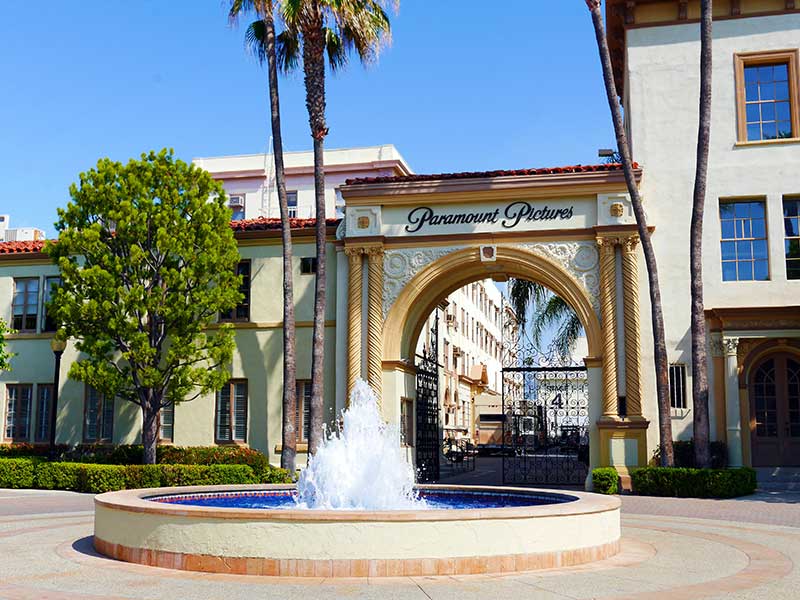Film History Around Los Angeles
Hollywood movie studios tours are a great way to spend your time if you’re visiting us in Southern California from elsewhere in the world.
Hollywood, often regarded as the entertainment capital of the world, is home to several major movie studios that have played a pivotal role in shaping the global film industry. These studios have produced iconic films, cultivated legendary talent, and contributed significantly to the cinematic landscape. In this comprehensive exploration, we will delve into the history, significance, and locations of some of the most prominent movie studios in and around Hollywood.
- Warner Bros. Studios:
- Location: 4000 Warner Blvd, Burbank, CA 91522, USA
- History: Warner Bros., one of the oldest film studios in Hollywood, was founded in 1923 by the Warner brothers—Harry, Albert, Sam, and Jack. Located in Burbank, California, the studio has been a powerhouse in the industry, responsible for classic films like “Casablanca,” “Gone with the Wind,” and the “Harry Potter” series.
Over the years, Warner Bros. has evolved into a multimedia conglomerate, expanding its influence beyond film to television, music, and interactive entertainment. The iconic Warner Bros. Water Tower stands as a symbol of its enduring legacy.
- Universal Pictures:
- Location: 100 Universal City Plaza, Universal City, CA 91608, USA
- History: Universal Pictures, established in 1912, is one of the major film studios located in Universal City, California. Founded by Carl Laemmle, the studio has played a crucial role in the development of the horror genre with classics like “Dracula” and “Frankenstein.” Universal Studios is also renowned for its theme parks, offering visitors an immersive experience in the world of cinema.
Universal Pictures has been a prolific producer of both classic and contemporary films, including franchises like “Jurassic Park” and “Fast & Furious.” The studio’s iconic revolving globe is a symbol recognized worldwide.
- Paramount Pictures:
- Location: 5555 Melrose Ave, Los Angeles, CA 90038, USA
- History: Founded in 1912 by Adolph Zukor, Paramount Pictures has been a significant player in the entertainment industry. Situated on Melrose Avenue in Los Angeles, the studio has been responsible for producing timeless classics such as “The Godfather,” “Titanic,” and “Forrest Gump.”
Paramount has weathered various industry changes and remains a major player in Hollywood. The studio lot has been a hub for creativity, and its iconic gates are emblematic of the history it holds within its premises.
- 20th Century Studios (formerly 20th Century Fox):
- Location: 10201 W Pico Blvd, Los Angeles, CA 90035, USA
- History: Originally founded in 1935 as 20th Century-Fox, this studio has undergone changes in ownership and branding over the years. The Walt Disney Company acquired it in 2019 and subsequently dropped “Fox” from its name, becoming 20th Century Studios. The studio lot, located in Los Angeles, has been home to blockbuster franchises like “Star Wars” and “Avatar.”
20th Century Studios has a rich history of producing critically acclaimed films, including “The Sound of Music” and “The Simpsons Movie.” The distinctive monument with its iconic searchlights has been a symbol of Hollywood glamour.
- Columbia Pictures:
- Location: 10202 W Washington Blvd, Culver City, CA 90232, USA
- History: Founded in 1924, Columbia Pictures is part of the Sony Pictures Motion Picture Group. Located in Culver City, California, the studio has been responsible for producing classics like “Lawrence of Arabia” and modern hits like “Men in Black” and “The Social Network.”
Columbia Pictures has been a major contributor to the film industry, with its name intertwined with Hollywood history. The studio lot, with its iconic “Lady with the Torch” statue, stands as a testament to its enduring legacy.
- Walt Disney Studios:
- Location: 500 S Buena Vista St, Burbank, CA 91521, USA
- History: Founded by Walt Disney and Roy O. Disney in 1923, Walt Disney Studios has become synonymous with animation and family-friendly entertainment. Located in Burbank, California, the studio has produced timeless classics like “Snow White and the Seven Dwarfs,” “The Lion King,” and the acquisition of Pixar and Marvel has expanded its creative portfolio.
Beyond animation, Disney has ventured into live-action films, acquiring major franchises like “Star Wars” and “Marvel.” The Disney lot, with its iconic animation building, reflects the magic and innovation that the studio has brought to audiences worldwide.
- MGM Studios (Metro-Goldwyn-Mayer):
- Location: 10250 Constellation Blvd, Los Angeles, CA 90067, USA
- History: Metro-Goldwyn-Mayer, commonly known as MGM, has been a cornerstone of Hollywood since its inception in 1924. Known for its roaring lion logo, Leo, MGM has produced classics like “The Wizard of Oz,” “Gone with the Wind,” and the James Bond franchise.
Over the years, MGM has faced financial challenges and changes in ownership, but its legacy endures. The studio lot in Los Angeles stands as a testament to its contribution to the golden age of Hollywood.
- Sony Pictures Studios:
- Location: 10202 W Washington Blvd, Culver City, CA 90232, USA
- History: Originally part of MGM, the lot that now houses Sony Pictures Studios in Culver City has a rich history dating back to the early days of Hollywood. Sony Pictures Entertainment acquired the lot in 1989, and it has since been a hub for film and television production.
Sony Pictures has been a major player in the industry, producing hits like “Men in Black” and “Spider-Man.” The studio lot, with its iconic rainbow-colored entrance, is a recognizable landmark in the entertainment industry.
In conclusion, the major movie studios around Hollywood have played a pivotal role in shaping the global film industry. Each studio has its own unique history, contributions, and iconic symbols that reflect the rich tapestry of Hollywood’s cinematic legacy. From the classic era to the modern age, these studios continue to influence and entertain audiences worldwide, making Hollywood an enduring symbol of creativity and innovation in the world of filmmaking.

